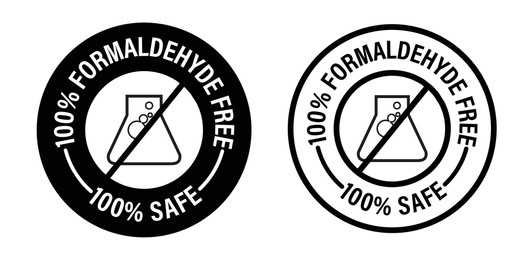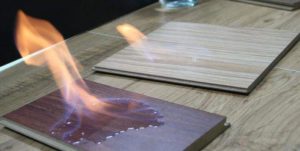
The so-called artificial board refers to a board made of plant fibers as raw materials, separated into unit materials of various shapes through mechanical processing, and then combined and added with adhesive to suppress them, including plywood, fiberboard, particleboard, etc. Artificial boards have alleviated the shortage of wood to a great extent and also met the needs of the decoration industry in various colors. However, artificial boards also have its shortcomings, that is, most of the artificial boards use urea-formaldehyde resin glue. Here comes the problem of indoor air pollution caused by formaldehyde. The methods for measuring formaldehyde pollutants in artificial boards mainly include the environmental test chamber method, perforation method, dryer method, gas analysis method etc. Each of these methods has its own advantages and disadvantages. The results obtained by the environmental test chamber method are closer to the actual use of the board. status, so the results are the most authoritative, but the disadvantage is the high cost of testing and the long testing cycle. The perforation method detects the content of free formaldehyde in artificial boards, and the dryer method detects the formaldehyde release of artificial boards. Although these two methods are not as close to reality as the environmental chamber method, they are simple methods and have short detection cycles. It is shorter, 1 to 2 days, and the detection cost is much lower than the environmental chamber method. These two methods still have certain use value.
The principle of measuring formaldehyde by the dryer method is to process the artificial board into a test block of about 5cm × 15cm, seal the periphery with formaldehyde-free tape to eliminate the problem of large formaldehyde release in the periphery, and put the test block into a certain volume of drying chamber. In a dryer (usually 9 to 11L), put distilled water under the dryer. Place the dryer in an environment of 20±2℃ for 24 hours. After the formaldehyde released from the board is absorbed by the distilled water, use acetylacetone spectrophotometry to detect the absorption. The concentration of formaldehyde in the liquid is used to measure the degree of formaldehyde release from the board. Although this detection method is somewhat different from the actual use of the board, it can roughly compare the amount of formaldehyde released by the board. Moreover, this method is simple to operate and the instrument used is not expensive, so this method has its advantages. This method is more suitable for the detection of formaldehyde release from blockboards and plywood. In actual testing work, there are many factors that affect the accuracy of the results of measuring formaldehyde release by the dryer method. They mainly include the uniformity of sizing of the sample, the influence of temperature, the influence of the plate storage method and the color development conditions, etc. The impact of the former is mainly overcome by inspectors strictly following the sampling methods and sampling rules stipulated in the standards. We mainly discuss the following factors. Among the factors that influence the amount of formaldehyde released by the desiccator method, temperature has a great influence on the results. As the collection temperature increases, the absorbance value of the collection liquid after color development gradually increases, especially when it is above 30°C, it will cause The cured urea-formaldehyde resin decomposes to release formaldehyde, and the decomposition intensity increases as the processing temperature rises. Someone has done relevant experiments, and it is estimated that for every 1°C increase in temperature, the test results increase by 10%. Therefore, it is very necessary to establish a constant temperature laboratory to ensure the spatial uniformity of environmental conditions. The influence of color development conditions is mainly reflected in the color development time. According to the standard method, after the test piece is placed in a desiccator for 24 hours, the liquid to be tested should be moved to an Erlenmeyer flask, and acetylacetone and ammonium acetate solutions should be added to develop color in a (40±2°C) water bath. The color development should be determined by It can be seen from the absorbance results of the liquid that the absorbance value is relatively stable after 15 minutes and will no longer change as time goes by, so the color development time should be controlled at 15 minutes. At the same time, we measured the change in the absorbance of the color developing solution with the time it was left at room temperature. From the measurement results, we learned that the absorbance decreased with the increase of time. Generally, it is enough to leave it for 1 hour after color development. It can be seen that it is very important to control the storage time at room temperature, especially the color development time of the formaldehyde standard solution, the color development time of the sample collection solution and the storage time at room temperature. During sampling, samples should be individually sealed and packaged in vinyl bags to ensure that samples do not interfere with each other. Secondly, the samples should be placed in the laboratory for several days to balance before the experiment, because if the plates taken out from sealed storage or from the laminated state are directly tested, they will precipitate from the plates during the sealing or lamination process but have not volatilized. Formaldehyde in the air still remains in the gaps between the boards, which will cause the test results to be high. If the formaldehyde concentrated on the surface of the board is fully released and reaches equilibrium after being left alone in the laboratory for 3 to 4 days, the analysis results will be relatively true.
In addition, in the process of measuring formaldehyde, the maximum absorption wavelength must be selected, which can ensure the sensitivity of detection and eliminate other spectral interference. When drawing the working curve, attention should be paid to checking the standard curve. Not only should the standard curve be redone when changing the acetylacetone and ammonium acetate solutions, but the standard curve should also be checked once a week when the chromogen is not changed. At the same time, the operating conditions for measuring samples and drawing working curves must be consistent. In addition, it should be noted that the internal volume of the dryer and the surface area of the absorption dish will also have a direct impact on the test results.
The perforation extraction method detects the content of free formaldehyde in the board, not the amount of release. The principle is to process the artificial board into a test piece of about 2cm × 2cm, about 100g. Put it into a distilling flask, put toluene in the distilling flask, heat it and boil it, use toluene to extract the formaldehyde in the plate, the distilled toluene carries formaldehyde, passes through the extraction tube on the distilling flask, the extraction tube is filled with water, and The formaldehyde in the toluene in the extraction tube is transferred to the water phase in the extraction tube, and is distilled for a certain period of time. After all the formaldehyde in the plate has been transferred to the water phase, the formaldehyde content in the water phase is analyzed. The analysis method is still acetylacetone spectroscopy. Photometric method, convert the result into the formaldehyde content per unit material, which is the formaldehyde content in the artificial board. The detection cost of this method is not high and the operation is not complicated. This method is mainly suitable for the detection of formaldehyde content in medium and high density boards and particleboards. Because toluene has a better effect of dissolving urea-formaldehyde resin glue, it can extract the free formaldehyde in the board more completely, and its detection results are closer to the actual content. The GB/T17657-1999 standard also stipulates another analysis method – iodometric method, and mentions that when the formaldehyde content is low, spectrophotometry is recommended. Iodometric titration is actually a redox reaction. In fact, the formaldehyde contained in the water, the unsaturated substances brought by the extraction solvent toluene, and some other reducing substances generated by the hydrolysis of wood participate in the reaction. The analysis result is higher than that of spectrophotometry. First, when the sample is cooked at the boiling temperature of toluene (110°C), the reducing groups (such as methoxy groups) contained in the cellulose macromolecules may break or produce aldehyde, ketone or alcohol products through hydrolysis. The extraction is transferred to water, reacts with iodine, and the titration results are all regarded as formaldehyde. Hemicellulose in wood may also hydrolyze and produce some reducing substances. The higher the moisture content in the specimen, the greater the deviation, which also shows that hydrolysis reaction does occur during the cooking process. Therefore, try to use spectrophotometry to measure formaldehyde content in experiments.
The environmental test cabin method, also called the climate box method, simulates the environmental conditions of people’s daily life. It controls the temperature, humidity, air flow rate, and air exchange rate in the cabin under conditions close to those of people’s daily life. Put it into the cabin and let the board naturally release formaldehyde. When the formaldehyde concentration in the cabin reaches equilibrium, the concentration of formaldehyde in the air in the cabin is detected as the detection result of the formaldehyde release amount of the board. There is currently no national standard for measuring the amount of formaldehyde released in materials using environmental testing chambers in my country. The “Code for Control of Indoor Environmental Pollution in Civil Construction Engineering” refers to the standards of some EU countries and the experience of a limited number of units using environmental chambers in my country. The method for measuring the release of free formaldehyde in materials in environmental test chambers. The specified test conditions are temperature 23±1°C, relative humidity 45±5%, air exchange rate 1 time/hour, and air flow rate in the cabin 0.1m/s~0.3 m/s, the material load ratio in the cabin is 1:1 (m3:m2) (that is, the ratio of the volume of the cabin to the area of the plate release surface is 1:1). During the release process of the board, by continuously sampling the air in the cabin for analysis, a release curve can be obtained in which the amount of free formaldehyde released in the material gradually decreases with time. This curve can be used to predict the change process of the board’s indoor environmental pollution, and thus it can be concluded How long does it take for a general board to reach a relatively safe release amount? The environmental testing chamber method should be a more scientific method for testing formaldehyde in boards, and it is the development trend of formaldehyde pollutant detection methods for artificial boards. This method is specified in the standard as the arbitration method. The environmental chamber needs to control the temperature, relative humidity and air flow rate, that is, the air replacement rate. Judging from the laboratory test results, the error of the test results is often reflected in the difference in the accuracy of monitoring the above three indicators. The higher the temperature, the greater the release rate. The smaller the air flow rate, the higher the concentration. Temperature and relative humidity are generally controlled by the monitoring device attached to the instrument, while the air replacement rate is factory set and lacks monitoring. Therefore, as long as the instrument is unstable, there will be a large deviation in the results, and inspection personnel should monitor it regularly.

